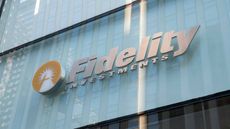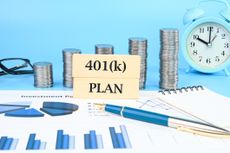Great Mutual Funds for Young Investors
From core funds to sector funds, these portfolios are well suited for people with long time horizons.

The Great Recession has scared nearly an entire generation away from stocks. According to a 2013 survey by Wells Fargo, more than half of people age 22 to 32 lack confidence in the stock market. Anton Bayer, chief executive of Up Capital Management, a registered investment adviser in Granite Bay, Cal., says this attitude is understandable given that young people have seen nothing but a high-volatility market during their investing lifetime.
"Their approach is 'If I don't do anything, I won't lose money,' but that's not good enough," Bayer says. "They need to engage. In order to build wealth, you can't be passive."
Mutual funds can be the best way for young investors to get in on the action. A single investment can include a diversified portfolio at a relatively low cost. Plus, Bayer points out, "in times of storms, mutual funds can weather the ups and downs a little bit better than a few individual stocks."

Sign up for Kiplinger’s Free E-Newsletters
Profit and prosper with the best of expert advice on investing, taxes, retirement, personal finance and more - straight to your e-mail.
Profit and prosper with the best of expert advice - straight to your e-mail.
Build Your Core
A solid investment base starts with index mutual funds, which mimic the returns of a broad market segment. These funds are easy for young investors to comprehend because there are neither exotic investment strategies to unravel nor the stock-picking whims of fund managers to decipher.
"A very simple, no-load index fund is the cheapest and easiest way to go," says Lauren Locker, a financial planner based in Little Falls, N.J. "It'll let you hit a little bit of everything, and you don't really have to pay too much attention to it."
Locker recommends Vanguard Total Stock Market (symbol VTSMX). The majority of its portfolio (72.2%) is invested in giant- or large-company stocks, but it also dips into medium-, small- and micro-cap stocks. Its benchmark, the CRSP U.S. Total Market Index, is made up of about 3,600 U.S. stocks. Over the past five years, Vanguard Total Stock Market has gained 26.0% annualized, ranking it in the top 12% of its "large blend" category. (Large blend funds invest in both growth and value stocks and are fairly representative of the entire stock market. All returns and related numbers are as of March 5.) The fund's expense ratio is a very low 0.17% per year. It requires a minimum initial investment of $3,000.
One note on fund performance figures: Stocks have been on a tear since the brutal bear market ended in March 2009, resulting in outsized gains during the past five years. Don't expect these heady returns to continue indefinitely. Over the long term, the average return of the stock market is closer to 10% per year.
Investing rookies might also enjoy the set-it-and-forget-it benefit of target-date funds. Get started by choosing the year in which you want to achieve your investing goal, such as retirement. Then, pick a fund with that year in its name. The managers will build the fund's asset allocation to suit your time horizon and dial down the risk as the fund's deadline approaches.
Three of the biggest fund families — Fidelity, T. Rowe Price and Vanguard — offer quality target-date options, says Locker. Vanguard boasts the lowest fees. The Vanguard Target Retirement 2050 fund (VFIFX), suitable for a 29-year-old aiming to retire at age 65, has an expense ratio of just 0.18%. Fidelity's and T. Rowe's 2050 funds charge 0.82% and 0.78%, respectively. T. Rowe Price Retirement 2050 (TRRMX) has the best performance record of the three, earning 23.9% annualized over the past five years, keeping pace with the widely followed Standard & Poor's 500-stock index and topping Vanguard 2050 by an average of 2.0 percentage points per year and Fidelity Freedom 2050 (FFFHX) by an average of 2.7 points per year.
Instead of the target-date approach, Bayer prefers using balanced funds, which generally invest in a mix of stocks and bonds. "These are very useful tools for younger investors because they're the whole package," he says. Over time, he suggests switching from more-aggressive balanced funds to more-conservative balanced funds as your investment needs change. For example, opt for the aggressive fund when you're young and have time on your side, then move into increasingly conservative balanced funds as you approach retirement.
Bayer likes Invesco Equity and Income (ACEIX), which Morningstar categorizes as "aggressive allocation," meaning the fund typically has 70% to 90% of its assets in stocks. He might trade it for a "moderate allocation" fund with 50% to 70% in stocks, such as Hartford Balanced (ITTAX), to ease up on risk. Unfortunately, both funds' Class A shares come with a 5.5% load — a sales charge that can really take a bite out of your returns. But if they're available through your 401(k), you may be able to skip that extra fee.
For a no-load balanced option, consider FPA Crescent (FPACX), a moderate allocation fund and member of the Kiplinger 25, a collection of our favorite no-load mutual funds. Manager Steven Romick is free to invest almost anywhere and in a range of different assets, from stocks and bonds to currencies and subprime home loans. But with his strategy of seeking out-of-favor stocks, he has found few compelling opportunities during the market's recent run. The fund currently has a portfolio that's 44.1% cash. It has earned 16.7% over the past year, better than its peers by 4.0 percentage points, but it trailed the S&P 500 by 7.6 points. Long-term returns are more impressive: Over the past 15 years, it has gained an average of 9.9% a year, beating the S&P 500 by an average 5.4 percentage points a year and leading its category. The fund charges 1.14% in annual expenses and requires $1,500 to start.
Bet on Innovation
After you settle on your core funds, you may want to devote a portion of your investing dollars to sector funds that offer the potential to outperform the broader stock market. These funds can (and probably will) have more ups and downs than core funds, but young investors with ample time to recover from investing stumbles can afford to take on the added risk.
Bayer suggests looking at the technology and biotech sectors — both top performers over the past few years. What do these sectors have in common? Innovation. "They are introducing new products, new services, something that's allowing them to introduce new sources of revenue," says Bayer. "Buying early in innovation is a huge opportunity."
He recommends Fidelity Select Biotechnology (FBIOX). Manager Rajiv Kaul seeks companies with strong pipelines and breakthrough innovations on the horizon. Over the past three years, this Fidelity fund has ranked tops among health funds with a return of 47.4% annualized, beating its peers by an average of 26.9 percentage points per year and the S&P 500 by an average of 32.6 points per year. It requires a minimum initial investment of $2,500 and charges 0.79% in annual expenses.
Ivy Science and Technology (WSTAX) is a load fund that Bayer thinks is worth the cost. It has a sales charge of 5.75% on top of its 1.37% annual expense ratio, but the fund has returned a whopping 46.7% over the past year, 22.4 percentage points better than the S&P 500 and 10.7 points more than the average technology fund. Over the past ten years, it has outperformed 97% of its peers. Top holdings include household names Google (GOOG) and Facebook (FB) as well as lesser-known companies, such as Cree (CREE) and Aspen Technology (AZPN). The minimum initial investment is $500.
Get Kiplinger Today newsletter — free
Profit and prosper with the best of Kiplinger's advice on investing, taxes, retirement, personal finance and much more. Delivered daily. Enter your email in the box and click Sign Me Up.

Rapacon joined Kiplinger in October 2007 as a reporter with Kiplinger's Personal Finance magazine and became an online editor for Kiplinger.com in June 2010. She previously served as editor of the "Starting Out" column, focusing on personal finance advice for people in their twenties and thirties.
Before joining Kiplinger, Rapacon worked as a senior research associate at b2b publishing house Judy Diamond Associates. She holds a B.A. degree in English from the George Washington University.
-
 Is the EV Tax Credit Going Away? What You Need to Know
Is the EV Tax Credit Going Away? What You Need to KnowTax Credits There's a lot of chatter about the President-elect's plans to eliminate the electric vehicle tax credit. Here's what's happening.
By Kelley R. Taylor Published
-
 Being Nimble Is Key to This Fidelity Bond Fund's Outperformance
Being Nimble Is Key to This Fidelity Bond Fund's OutperformanceThe Fidelity Total Bond ETF has done well over the long term as managers adjust to changing tides.
By Nellie S. Huang Published
-
 Smart Ways to Invest Your Money This Year
Smart Ways to Invest Your Money This YearFollowing a red-hot run for the equities market, folks are looking for smart ways to invest this year. Stocks, bonds and CDs all have something to offer in 2024.
By Jeff Reeves Published
-
 Vanguard's New International Fund Targets Dividend Growth
Vanguard's New International Fund Targets Dividend GrowthInvestors may be skittish about buying international stocks, but this new Vanguard fund that targets stable dividend growers could ease their minds.
By Nellie S. Huang Published
-
 Where To Invest Your 401(K)
Where To Invest Your 401(K)Knowing where to invest your 401(k) money can be difficult. Here, we rank 10 of the largest retirement funds.
By Nellie S. Huang Published
-
 7 Best Stocks to Gift Your Grandchildren
7 Best Stocks to Gift Your GrandchildrenThe best stocks to give your grandchildren have certain qualities in common.
By Dan Burrows Last updated
-
 How to Find the Best 401(k) Investments
How to Find the Best 401(k) InvestmentsMany folks are likely wondering how to find the best 401(k) investments after signing up for their company's retirement plan. Here's where to get started.
By Deborah Yao Published
-
 How to Master Index Investing
How to Master Index InvestingIndex investing allows market participants to use baskets of stocks and bonds to build the best portfolio to meet their goals. Here's how it works.
By Nellie S. Huang Published
-
 How to Find the Best Vanguard ETFs
How to Find the Best Vanguard ETFsInvestors looking for the best Vanguard ETFs would be wise to follow the philosophy of John Bogle, the asset manager's founder.
By Jeff Reeves Last updated
-
 Donor-Advised Funds: A Tax-Savvy Way to Rebalance Your Portfolio
Donor-Advised Funds: A Tax-Savvy Way to Rebalance Your PortfolioLong-term investors who embrace charitable giving can easily save on capital gains taxes by donating shares when it’s time to get their portfolio back in balance.
By Adam Nash Published